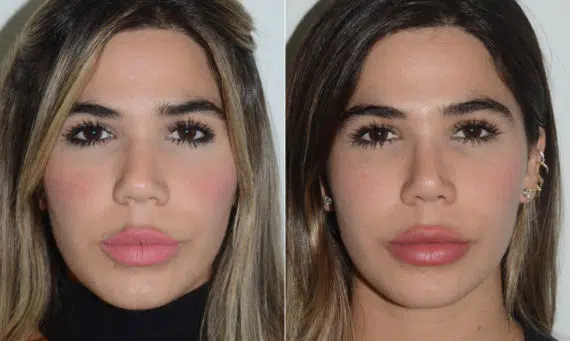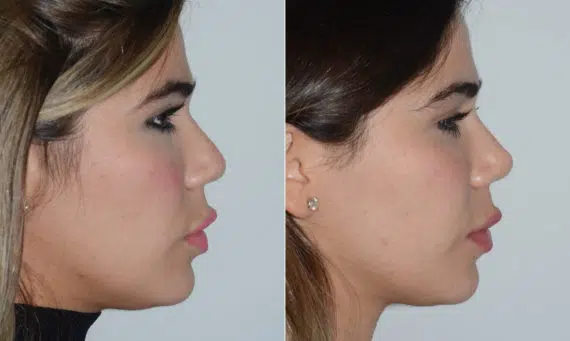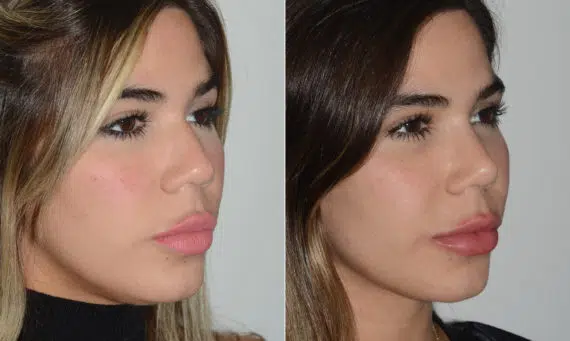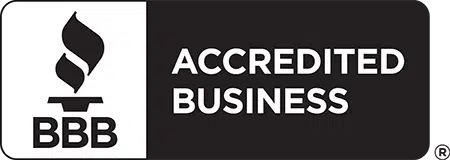Rhinoplasty, sometimes known as a nose job, is a procedure in which plastic surgeons alter the appearance of the nose. It can be done for utilitarian purposes, such as better breathing, or for aesthetic reasons, such as enhancing facial features. While rhinoplasty has drawbacks, it can be a life-changing procedure.
One issue is the post-rhinoplasty development of a “piggy nose.” The piggy nose effect, its causes, and how it might be rectified will be covered in this paper.
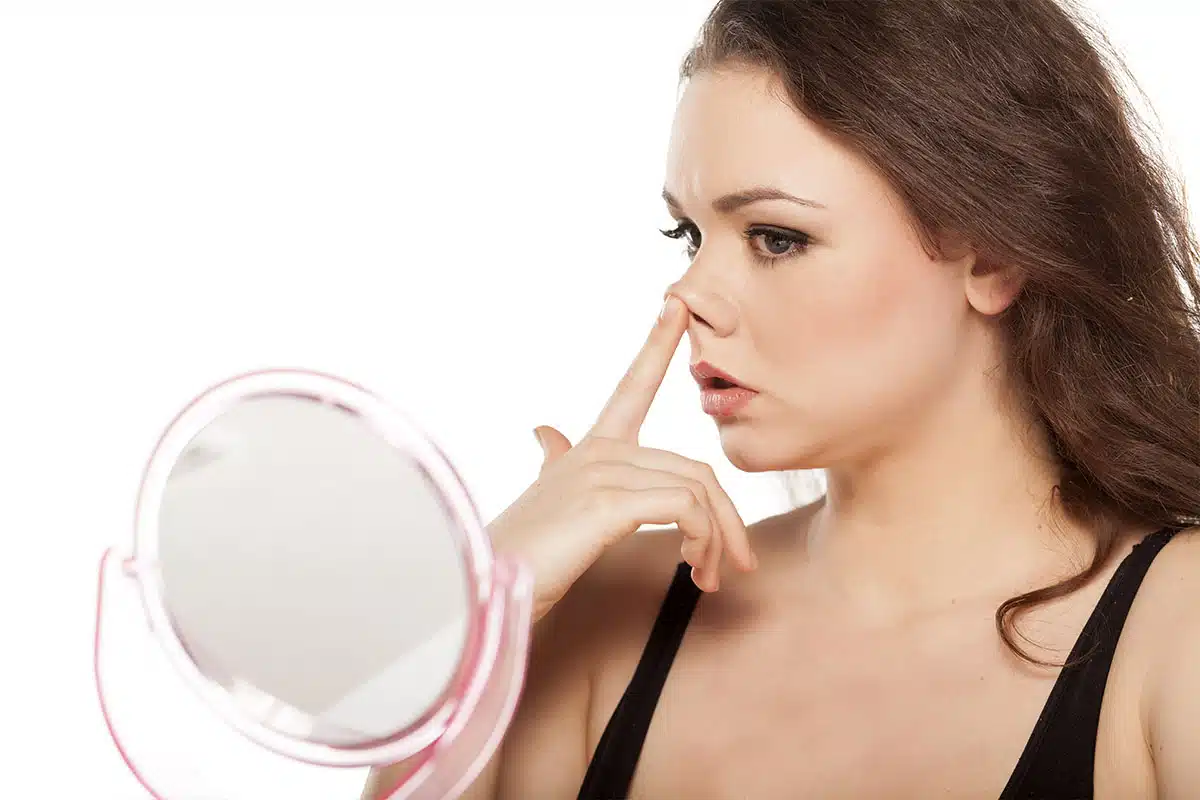
Piggy Nose Effect After Nose Job
- The piggy nose effect can be corrected through non-surgical methods or revision rhinoplasty.
- Choosing a board-certified plastic surgeon minimizes the risk of post-surgical complications.
- Healing takes time – swelling can persist for 6-12 months before final results appear.
- Non-surgical solutions like fillers and thread lifts can help for minor concerns.
- Real patient experiences provide valuable insights into the correction journey.
The Piggy Nose Effect: A Post-Rhinoplasty Challenge
What Is the Piggy Nose Effect?
Medically known as an over-rotated nasal tip, the piggy nose effect results from excessive upward rotation of the nose. While some tip rotation is expected due to swelling and healing, an exaggerated upturn can distort facial proportions and cause dissatisfaction.
Recognizing Piggy Nose Symptoms
Patients experiencing the piggy nose effect may notice:
- A shortened nasal tip with minimal projection
- Overly exposed nostrils, giving a “pig-like” look
- A lack of nasal balance, disrupting overall facial harmony
- Difficulty in breathing (in some cases)
If these symptoms persist beyond the normal healing phase, further evaluation is necessary.
Causes of Piggy Nose After Rhinoplasty
Understanding the root causes of an over-rotated nasal tip can help patients prevent and correct the condition effectively.
1. Surgical Errors and Over-Resection
- Excessive cartilage removal: Over-resection of nasal cartilage reduces structural support, causing the tip to rotate excessively upward.
- Inappropriate surgical techniques: An inexperienced surgeon may improperly shape the nasal tip, leading to an unnatural upturned effect.
2. Anatomical Factors
- A naturally short nasal bone or a prominent upper lip can contribute to an exaggerated upturn.
- Thinner nasal skin may heal differently, revealing excess rotation more prominently.
3. Healing and Scar Contracture
- Scar tissue formation during recovery can pull the tip upwards.
- Poor post-operative care can exacerbate excessive rotation.
🔎 Pro Tip: Choosing an experienced, board-certified facial plastic surgeon significantly lowers the risk of over-rotation.
Questions about your procedure?
Schedule a consultation with Dr. Andres Bustillo.
How to Correct a Piggy Nose
Surgical Revision for Severe Cases
For more pronounced upturns or cases where facial harmony is affected, surgical revision is necessary. This complex procedure may involve:
Using cartilage from the ear or rib to extend the nasal tip and restore balance.
Strengthening the nasal framework to prevent further tip rotation.
Adjusting the nasal base, tip, and overall form to achieve a natural, balanced look.
⏳ Important: Allow at least one year after the initial surgery before considering revision to ensure complete healing and stabilization of the nasal structure.
Initial Assessment and Consultation
Before opting for revision procedures, an in-depth consultation with a board-certified rhinoplasty specialist is crucial. During this session, the surgeon evaluates:
Including the nasal bridge, septum, and passages to assess the upturned appearance and identify any functional issues like breathing difficulties.
The thickness and flexibility of the nasal skin, which can influence healing and the final result.
Ensuring the nose has stabilized after the initial surgery.
Addressing issues like a piggy nose, pixie nose, or other asymmetries caused by over-rotation or poor surgical outcomes.
🔍 Pro Tip: Reviewing the original surgical techniques helps guide the corrective plan and ensures a more tailored approach to revision.
Non-Surgical Options for Mild Cases
For mild cases of over-rotation, non-surgical procedures offer temporary solutions:
Strategically adding volume to balance the nasal tip and reduce the upturned appearance.
Using absorbable threads to lift and slightly adjust the nasal tip without invasive surgery.
🔍 Non-surgical corrections are ideal for patients hesitant about undergoing another surgery or looking for temporary improvements. They also allow patients to “test-drive” nasal modifications before committing to a permanent surgical solution.
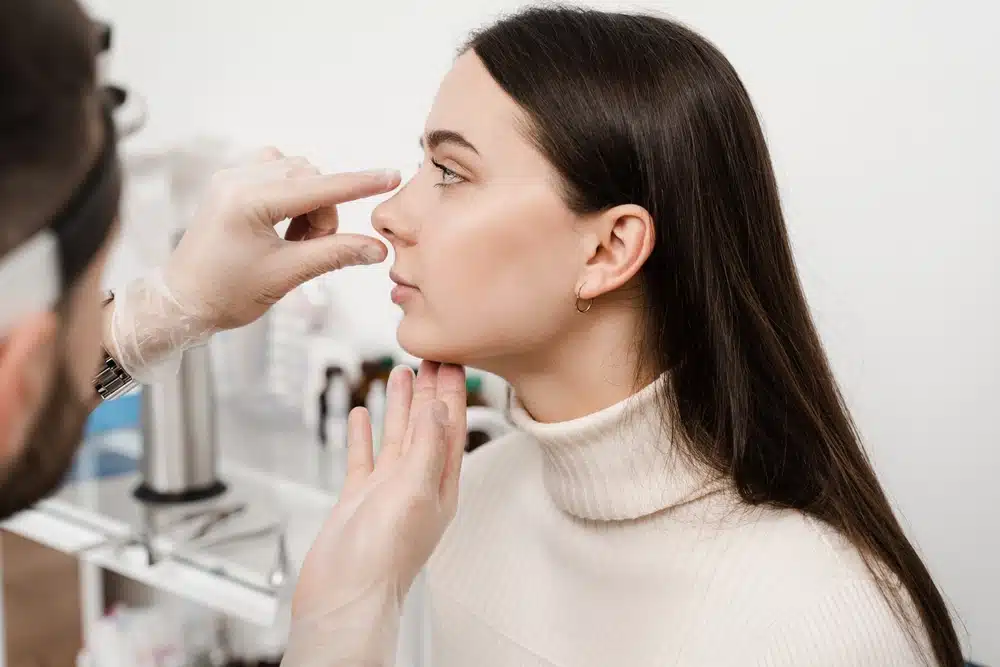
The Role of Surgeons in Preventing Piggy Nose
Preventing a piggy nose effect post-rhinoplasty is largely in the hands of the surgeon. Their skill, expertise, and surgical techniques play a crucial role in the final outcome of the surgery.
Importance of Choosing the Right Surgeon
Choosing a board-certified surgeon with vast experience in rhinoplasty is essential to avoid a piggy nose effect. A skilled surgeon understands the complexities of nasal anatomy and can predict how the nose will heal and settle after surgery.
Surgical Techniques to Avoid Piggy Nose
Surgeons can lower the risk of a piggy nose using specific techniques. One can gently flip a little piece of cartilage off the tip of the nose, support it with cartilage grafts, Furthermore, surgeons can use contemporary tools such as the Piezo ultrasonic device, which lets the nasal bones be precisely and under control rebuilt.
In essence, the piggy nose effect following rhinoplasty is manageable with the correct technique and expertise even if it can be uncomfortable.
Common Misconceptions About the Piggy Nose Effect
Misinformation about post-rhinoplasty results can cause unnecessary anxiety for patients. Let’s debunk some of the most common myths surrounding the piggy nose effect and its correction.
❌ Misconception 1: “A Piggy Nose Is Permanent After Rhinoplasty”
✅ Reality: Many cases of an upturned nasal tip are temporary and improve as swelling subsides. If the issue persists, non-surgical solutions like fillers or revision rhinoplasty can correct it.
❌ Misconception 2: “Only Bad Surgeons Cause the Piggy Nose Effect”
✅ Reality: While surgical skill plays a huge role, individual healing variations, scar tissue formation, and anatomical factors can also contribute. Even with a great surgeon, healing outcomes differ from patient to patient.
❌ Misconception 3: “You Can Fix It Immediately After Surgery”
✅ Reality: The nose takes months to heal, and residual swelling can make it look more upturned than it actually is. Patients should wait at least 12 months before considering revision surgery.
❌ Misconception 4: “Filler Fixes Can Replace Revision Surgery Permanently”
✅ Reality: Dermal fillers can provide a temporary fix by adding volume to balance the nasal tip, but they are not a permanent alternative to revision rhinoplasty in severe cases.
❌ Misconception 5: “The Piggy Nose Effect Only Happens After Cosmetic Rhinoplasty”
✅ Reality: Functional rhinoplasty (for breathing issues) can also alter the nasal structure, sometimes unintentionally leading to excessive tip rotation. It’s important for all patients to discuss aesthetic concerns before surgery, even if the procedure is medically necessary.
Recovery and Care Post-Correction of Piggy Nose
Following expert care for post-rhinoplasty recovery is essential to achieve the best results and avoid further complications. This includes adhering to the surgeon’s post-operative instructions, keeping good overall health, and being patient during the healing phase.
Post-Operative Care for Best Results
Post-operative care is vital for optimal results after turned-up nose correction surgery, including non-surgical nose jobs and revision rhinoplasty. Following the board-certified plastic surgeon’s instructions is crucial. Patients should keep their head elevated in the initial weeks to reduce persistent swelling and stick to a liquid diet for the first twelve hours post-anesthesia to maintain nasal function.
Most swelling from the rhinoplasty process subsides within 2-3 weeks, but residual swelling may last up to 6-12 weeks. Patients should refrain from strenuous activities until the fourth week post-surgery.
Keeping the nasal skin clean is also essential post-surgery to prevent infections and aid the healing process. The finished nose shape may not be immediately visible due to swelling and changes in nasal tissues during recovery.
Long-Term Management and Expectations
Post-operation care for a beautiful and natural-looking nose goes beyond the repair process and includes a healthy lifestyle, prevention from potential harm, and regular check-ins with the surgeon. Following the initial nose job, patients should avoid behaviors that could result in a broken nose or disruptions in nasal function.
Regular visits to the surgeon are essential for monitoring the healing process, correcting minor issues, and ensuring optimal nasal function. It is critical to set fair expectations, as the nose may take up to a year to fully adapt to its new shape.
If you are still dissatisfied with the contour of your nose, you should consider revision rhinoplasty contact Dr. Bustillo today by calling 305-663-3380 to learn more about rhinoplasty and to schedule a consultation.
